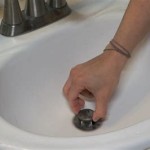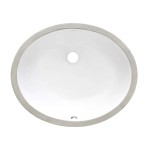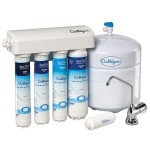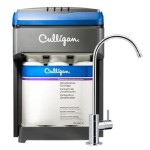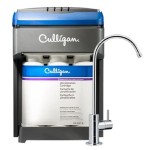Best Sink for Outdoor Kitchen
An outdoor kitchen significantly enhances a home's entertainment and living space. A key component of a functional and stylish outdoor kitchen is the sink. Choosing the right sink involves considering various factors, including material, size, installation type, and features. This article examines the best sink options for outdoor kitchens, providing information to help homeowners make informed decisions.
Material Matters: Durability and Aesthetics
The material of the sink plays a crucial role in its longevity and overall appearance. Stainless steel remains a popular choice due to its durability, resistance to corrosion and rust, and ease of cleaning. 304-grade stainless steel is particularly recommended for outdoor applications due to its superior resistance to the elements. Another durable option is granite composite, which offers a high-end look and resistance to scratches, stains, and heat. Copper sinks provide a unique aesthetic, developing a patina over time, but require more maintenance to prevent discoloration and damage. Finally, concrete sinks can be customized to complement the outdoor kitchen's design, offering a unique and stylish option, but may require sealing to prevent staining.
Size and Configuration: Meeting Your Needs
The size and configuration of the sink should align with the intended use of the outdoor kitchen. A single-bowl sink is suitable for smaller spaces and simpler needs, while a double-bowl sink offers greater versatility for food preparation and cleanup. Larger families or those who frequently entertain might benefit from a triple-bowl sink or a sink with a built-in drainboard. Consider the dimensions of the countertop and available space when selecting the sink size. Measuring the largest pots and pans commonly used in the kitchen can also help determine the appropriate bowl depth.
Installation Type: Drop-In, Undermount, or Farmhouse?
The installation type impacts the sink's appearance and integration with the countertop. Drop-in sinks are the easiest to install, simply dropping into a pre-cut hole in the countertop. Undermount sinks offer a seamless look and easier cleanup, as there is no lip between the sink and the countertop. Farmhouse sinks, also known as apron-front sinks, add a touch of rustic charm and offer a deep basin for washing large items. This installation typically requires more extensive modification of the countertop and cabinet structure.
Features to Enhance Functionality
Several features can enhance the functionality of an outdoor kitchen sink. Integrated drainboards provide a dedicated space for drying dishes and prepping food. A garbage disposal simplifies cleanup and reduces waste. Built-in soap dispensers and sprayers add convenience and streamline the workspace. Consider including a hot water dispenser for added convenience when washing dishes or preparing food. Additionally, choosing a sink with pre-drilled holes for faucets and accessories simplifies installation.
Budget Considerations: Balancing Quality and Cost
The cost of outdoor kitchen sinks varies significantly depending on the material, size, and features. Stainless steel sinks generally offer a good balance of quality and affordability. Granite composite and copper sinks tend to be more expensive, while concrete sinks can vary in price depending on customization. Establishing a budget before beginning the selection process can help narrow down the options and ensure the chosen sink aligns with the overall project cost.
Maintenance and Care: Preserving the Investment
Proper maintenance is essential for preserving the appearance and functionality of the outdoor kitchen sink. Regular cleaning with mild soap and water is recommended for most sink materials. Avoid using abrasive cleaners or scouring pads, which can scratch the surface. Stainless steel sinks may require periodic polishing to maintain their shine. Copper sinks require specific cleaning products to prevent discoloration. Concrete sinks should be sealed regularly to prevent staining and water damage. Following the manufacturer's care instructions will help ensure the longevity of the sink.
Choosing the Right Faucet: Complementing the Sink
The faucet plays a significant role in the overall functionality and aesthetic of the outdoor kitchen sink. Choose a faucet that complements the sink's style and material. Consider the faucet's height and reach to ensure it accommodates the sink's depth and size. Features such as pull-down sprayers and pot fillers can enhance convenience. Ensure the faucet is designed for outdoor use and can withstand the elements.
Placement and Ergonomics: Optimizing Workflow
Careful consideration should be given to the sink's placement within the outdoor kitchen layout. Positioning the sink near the grill or food preparation area can optimize workflow and minimize movement. Consider the height of the countertop and sink in relation to the user's height to ensure comfortable usage. Adequate lighting around the sink area is also essential for safe and efficient food preparation and cleanup.

How To Select An Outdoor Kitchen Sink Native Trails

Outdoor Kitchen Sink 7 Considerations Best Options For 2024 Rta Living

Outdoor Kitchen Sink And Faucet Ing Guide Barbeques Galore

7 Best Outdoor Sinks To Try Today Kitchen Guy

Best Options For Outdoor Kitchen Sinks 4 Life Kitchens

The Best Outdoor Kitchen Sinks Picks From Bob Vila

Coyote Outdoor Living Kitchen Sink 21 Stainless Steel C1sinkf21 Best

Thor Kitchen Outdoor Sink Cabinet Stainless Steel Mk01ss304 Best
:strip_icc()/101254540-1ca2fd0502e04d00aed8e88166f05f34.jpg?strip=all)
Diy Outdoor Kitchen Plumbing

The Best 5 Outdoor Kitchen Sinks For Your Needs
